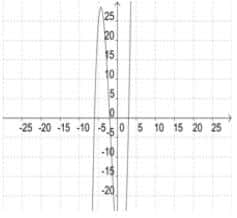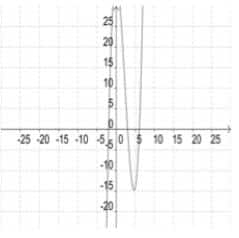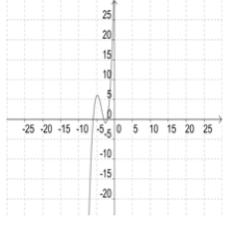SBAC High School Math 1 Practice Test
Which of the following represents the difference of (3x^3-9x^2+6x)-(8x^3+4x^2-3x)?
After distributing the minus sign across the second trinomial, the expression can be rewritten as 3x^3-9x^2+6x-8x^3-4x^2+3x. Combining like terms gives -5x^3-13x^2+9x.
A polynomial has factors of x-3, x+6, and x+2. Which of the following represents the graph of the polynomial?




Given the factors of x-3, x+6, and x+2, it can be determined that the polynomial has zeros at x=3, x=-6, and x=-2. Choice A correctly shows these x-intercepts.
Which of the following expressions is equivalent to the expression, (x-3)/(x^3-6x^2-9x+54)?
The denominator may be factored as (x^2-9)(x-6). The first binomial may be factored as (x-3)(x+3). Thus, the given expression may be rewritten as (x-3)/((x-3)(x+3)(x-6)), which simplifies to 1/((x+3)(x-6)).
Rewrite using fractional exponents: 5√(3&2^2 ) +√(7& 3^2 ).
Fractional exponential notation can be obtained with the following identity: √(y&b^x )=b^(x⁄y). 5∛(2^2 ) +√(7& 3^2 )=5∙2^⅔+3^(2⁄7). This cannot be simplified further by other rules governing exponentials because the bases are not the same.